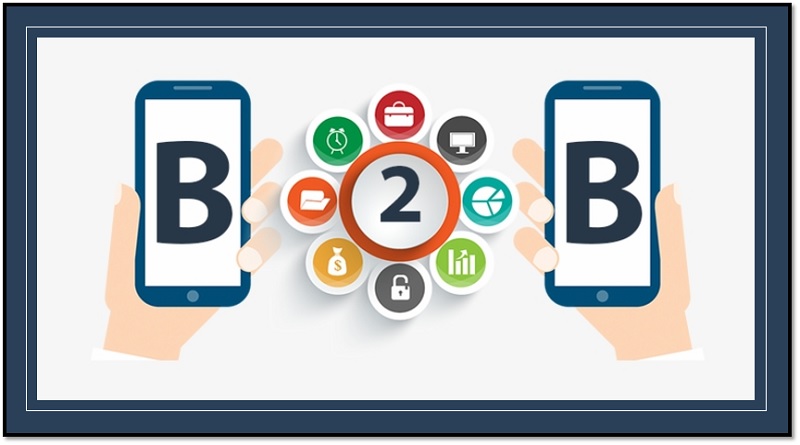Reinventing Web Design: Grapes Studio Lets Small Businesses Build Sites in Minutes
How to run a successful B2B marketing campaign

A business-to-business (B2B) marketing campaign can be a dependable way to increase your market’s visibility and control. Especially in light of the growth of B2B e-commerce and the heightened rivalry in the sector, online marketing campaigns are now an essential component of corporate strategy.
But planning and executing a successful marketing campaign is no easy task. A successful online campaign typically has several moving parts, from buyer personas to segmentation, marketing touchpoints, and more. If you’re not certain how the whole process works, we’re here to help.
This article will show you how to manage a profitable B2B marketing campaign for your business step-by-step. We will discuss B2B marketing campaigns, their benefits, and strategies for developing a B2B marketing campaign. Finally, we share useful tips on how to run a successful marketing campaign.
What is a B2B marketing campaign?
A B2B marketing campaign is a tactical plan that B2B sellers use to accomplish their marketing objectives. Businesses utilize this tactic to market to other businesses. Account-based marketing campaigns, inbound marketing, event marketing, email marketing, social media marketing, and video marketing are all examples of B2B marketing campaigns. B2B marketing currently prioritizes digital marketing channels, and according to McKinsey, at least 60% of corporate clients prefer to contact enterprises remotely and digitally.
The key component of every successful B2B marketing campaign is straightforward messaging that directly addresses B2B customers’ pain points. Personalization is also a hallmark of the best campaigns, and companies use this to invest in customer success with customized messages and content.
5 benefits of running a B2B marketing campaign
Compared to B2C marketing, B2B efforts are more focused and organized. This is especially beneficial for small enterprises trying to expand into a certain market. Here are some particular advantages of B2B marketing initiatives.
- Brand recognition
Brand recognition improves through marketing campaigns such as social media marketing and influencer marketing. This is in line with the goal of B2B marketing campaigns – to be seen and to be heard. Brand recognition could also lead to a ripple effect in other areas of the business, such as an improved bottom line.
- Improved bottom line
B2B marketing campaigns increase sales, thus improving your bottom line. One of the concerns of businesses regarding marketing campaigns is whether they can recoup their investment. B2B marketing certainly has a longer sales cycle, but in the long term, it will have a lasting positive effect on your profit margin. To enjoy this benefit, you have to be patient and consistent with your marketing strategies.
- Create high-value leads
Business-to-business marketing follows complex approaches, which include building sales lists and email lists and optimizing these lists to capture their target audience. This direct marketing method leads to high-value leads as the audience has already been analyzed and handpicked.
- A streamlined sales funnel
B2B marketing campaigns are specific and direct, and they focus on improving the customer experience through the purchase process. The sales funnel can also be automated such that B2B customers are guided to sales from their first contact, which could be a simple visit to your website or an inquiry via customer service.
- Long-term business relationships
B2B marketing usually pushes for long-term relationships between businesses and their customers. B2B customers want stability in their supply chains and often make purchases for long-term solutions. This could mean that, in the long run, B2B businesses would spend less on campaigns and just focus on customer retention.
How to create a B2B marketing campaign
B2B marketing campaigns are beneficial when done right. However, most of the mistakes you can make can be easily avoided. Always segment your audience, identify your campaign goals, and make use of relevant data.
Here are eight steps you can take to create a B2B marketing campaign.
- Define your target market and audience
If your business targets everyone, then you are targeting no one. As often said by industry specialists – niche is the way. Defining your target audience and market is key to running a successful B2B marketing campaign, and your target market will depend on your product or service. Your target audience or market is the group of people that you offer your product to, such that there is a near-perfect or even perfect product-market fit.
- Understand your target market demography
B2B marketing customers are always choosy and very conservative when it comes to making a buying decision. This is usually because there’s a lot more at stake here, such as the longevity of the company and the satisfaction of the stakeholders.
- Analyze the needs of your target market
Your product should be solutions, so focus on selling answers and not features. While some B2B clients are more interested in cutting costs, some prioritize the environmental sustenance of your offerings, and others are keen on building long-term business relationships.
- Identify your unique selling proposition (USP)
In addition to your product quality, you should have a business quality that adds extra value to your products or services and makes you stand out from the crowd. This is what is called the unique selling point, and it works like a charm.
- Determine the method to reach your audience
Choose a marketing medium that will suit your business well and that you can afford based on existing resources. Cold email is one of the most common forms of B2B marketing. Running a successful cold-email campaign depends on the value of the content that you will be sharing and the quality of the leads.
According to a LinkedIn study, 84% of decision-makers are influenced by social media. Focus on two or three channels at a time so you can invest in delivering value through the select channels. Select the one that will be most visible to the target audience in your target location.2
- Employ a customer success strategy
The customer success role focuses on delivering maximum value to your B2B clients. Customer success encourages potential customers and guides them into making a buying decision. Focus on building long-term relationships with B2B customers, as this would strengthen brand loyalty and customer retention.
- Create quality content and copy
B2B customers like to conduct in-depth research before they make a buying decision. You should provide the copies and content that they would need to conduct this research and make timely decisions. Good copy and content are straightforward, channel-specific, and answer all of the questions that your B2B customers would likely ask.
- Measure and analyze results
A B2B marketing campaign is not complete without documentation of the actions and results. Data is very important for this stage, and analytics tools have made this much easier for businesses. Analyze the marketing campaign’s results, including client feedback, and take adequate measures to improve. This would help you overcome common B2B challenges.
8 useful tips for a successful B2B marketing campaign
A successful B2B marketing campaign brings your target customers to you. Here are a few tested tips for running a successful B2B marketing campaign.
- Focus on clarity
The goal of your marketing campaign should be for businesses and other clients to find out for themselves that they need your product or service. To achieve this, the campaign message needs to be clear and concise. Every medium needs to answer the questions that users may have in their hearts and clear up any doubts that may be holding them back from patronizing your business.
- Improve on your USP
Your USP is your business’s unique selling point. It is what makes your business special. It is the marketing promise that sets you apart from your competitors. It may be customer service, delivery time, price, or even the quality of your products or services. If you haven’t identified your USP, you should focus on the reasons your current customers continue doing business with you. You can do this by gathering feedback or engaging in customer experience exercises. Analyzing your strengths is a further strategy for discovering your USP.
- Know your customer
B2B marketing campaigns should address the company’s specific needs. This goes beyond price and product. Businesses have other needs, such as social, environmental, and cultural considerations. If you want to position yourself as a reliable part of their supply chain, then you need to be able to identify these needs and considerations and provide solutions for them through or alongside your product or service.
- Offer valuable solutions
B2B marketing campaigns mostly target business owners, and these business owners are more interested in improving their bottom line than anything else. Here, practicable and profitable strategies rank over sweet words and eye-catching deals. You should offer logical and viable solutions that directly address the business needs.
- Provide value-adding benefits
B2B marketing, in plain view, is selling products or services to a business so that they can in turn sell their products to their customers. However, by ensuring that you care about the rest of their value chain and are interested in providing your products or services in a way that helps them impact their customers, you will be providing additional value to them. This also fosters a long-term relationship between your business and theirs.
- Be patient
B2B marketing takes more time to convert than B2C marketing. The major reason is that while the B2C customer can buy on impulse or make a quick decision, the B2B customer will go through an in-depth research process to ensure their purchase provides value for their money. B2B customers also have to consider other stakeholders in the business. You could speed up this process as a business owner by considering their buy-journey ab initio. Think about all the questions that they would need answered and incorporate them into your B2B marketing campaign.
- Niche down
B2B customers want personalized solutions for their businesses. Unless you offer SaaS – Software as a Service – this could be hard to pull off. What you can do is to niche down as much as you can to ensure that your target audience is specific. If you want to cater to a broad group, you can create several categories for B2B customers so that they are informed that you have the exact product they need or that you can provide the exact service they need and that you have the required skill to do so.
- Master the art of switching
The core B2B models are the customer-centric, buyer-centric, and longer-term relationship B2B business models. Customer-centric focuses on delivering additional value to the customer. This incurs extra costs. Buyer-centric focuses on selling products with no additional support. This is cheaper and good for B2B customers that are keen on cutting costs.
A longer-term relationship model offers stability and predictability. This will be great for a B2B client that’s keen on maintaining a stable and reliable supply chain. By mastering this, you will be able to cater to the needs of more B2B customers.
Conclusion
B2B marketing is all about identifying your target market and explaining how your company can assist them. One of the finest methods to dominate marketing and treat your consumers like VIPs is to be customer-focused. The brands can take advantage of B2B marketing and target businesses and organizations by using workable strategies and plans.




